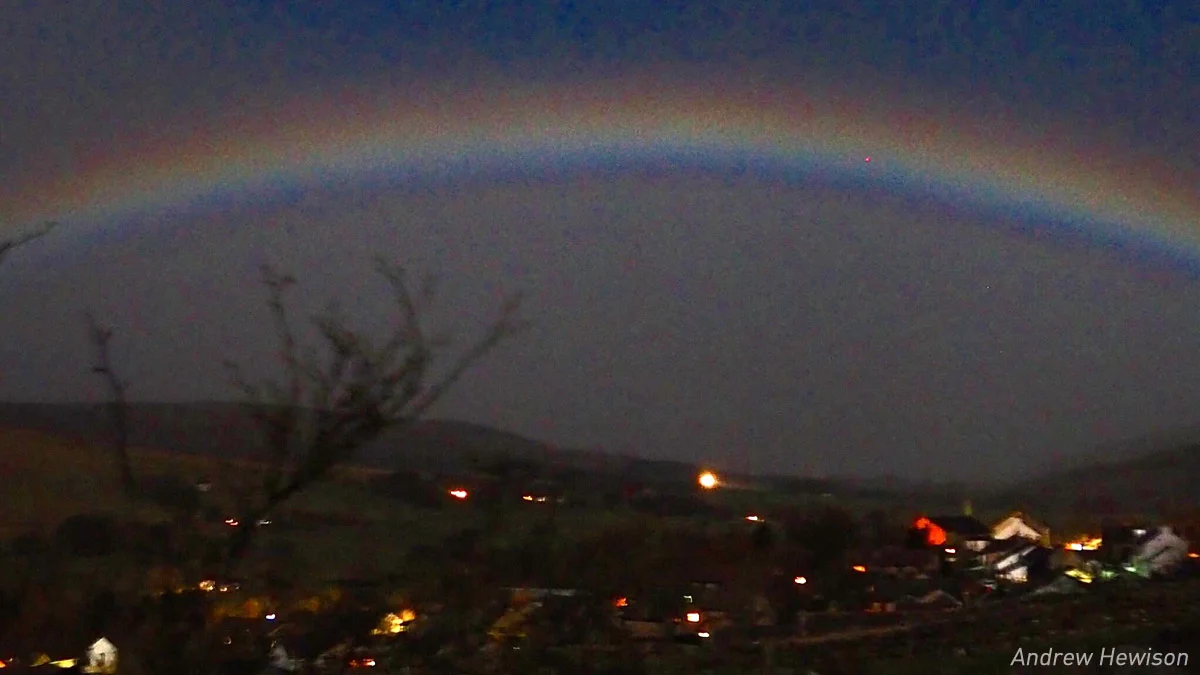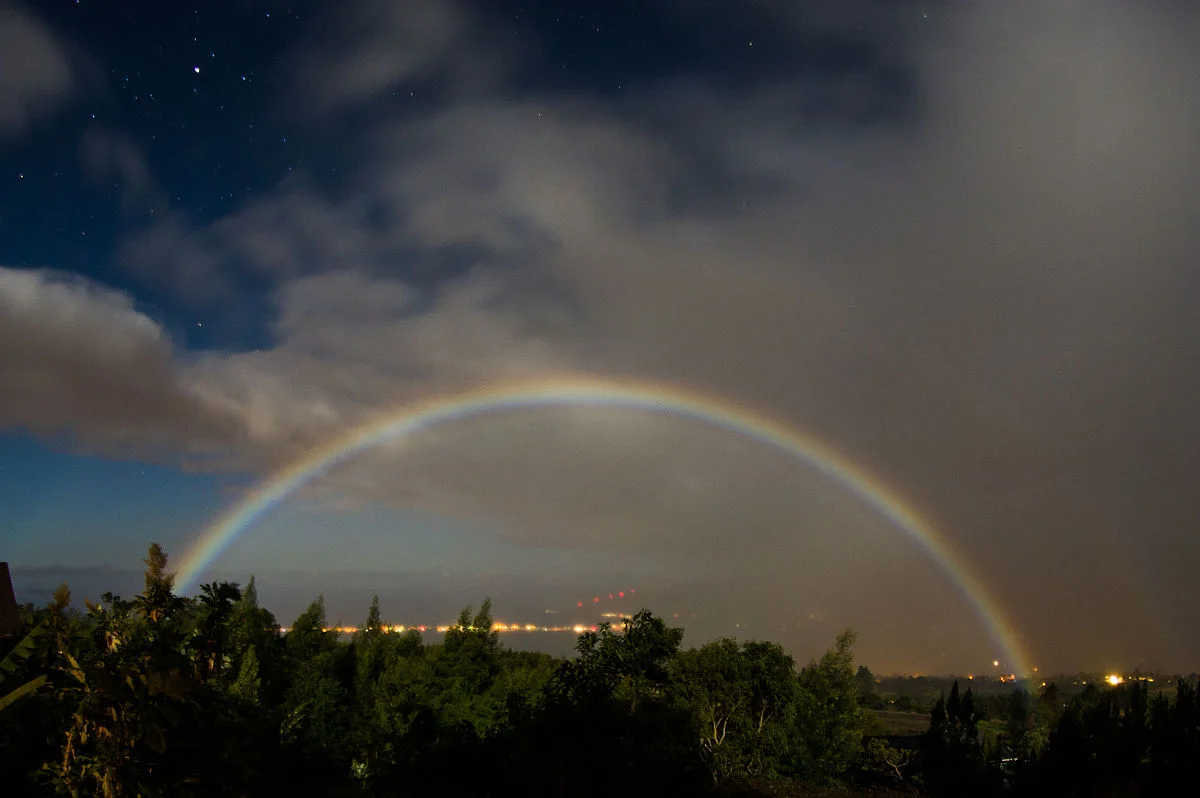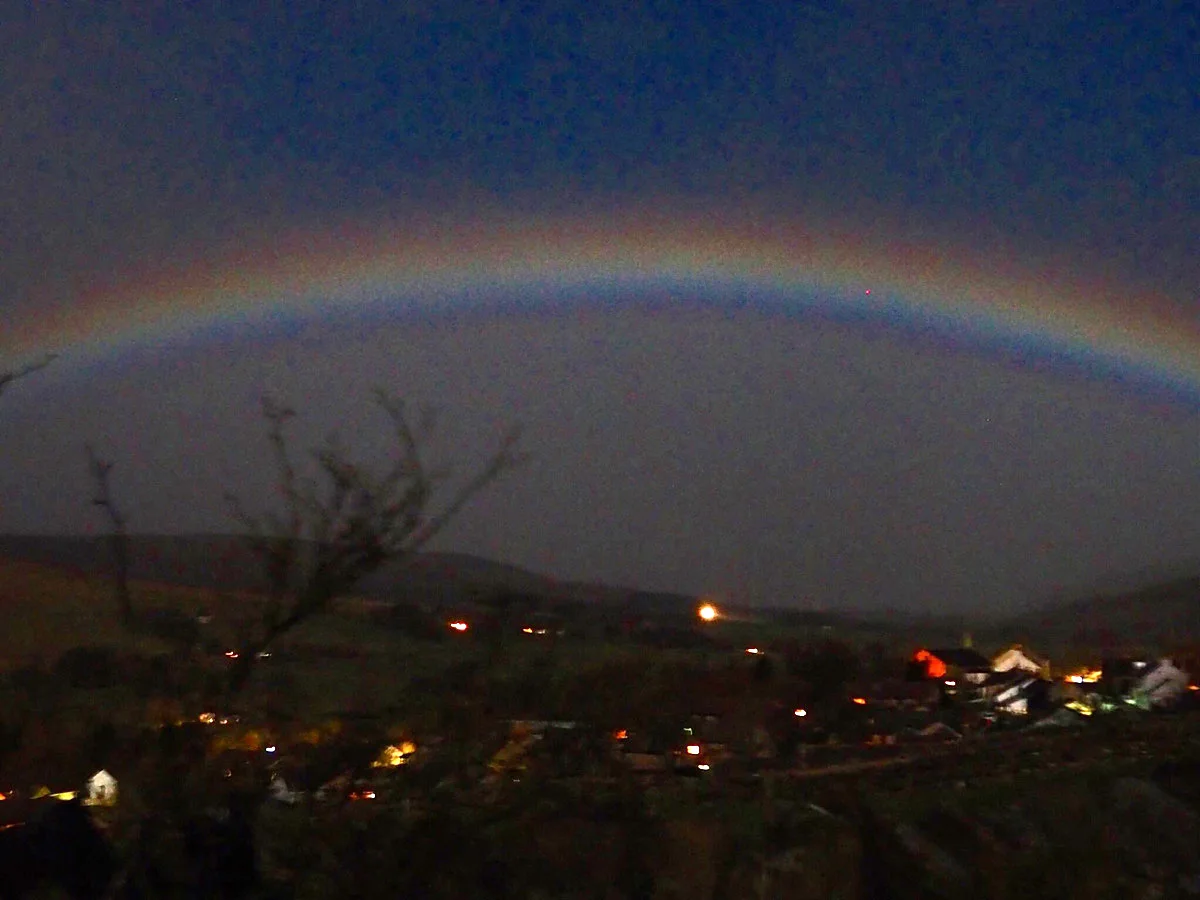
Rare moonbow ushers in spring during the Equinox Super Moon
What is a 'moonbow'?
While out walking his dog on the night of the Equinox, Andrew Hewison, from Cumbria, U.K., spotted a rare phenomenon in the sky.
Rushing home to grab a camera, he snapped a picture of this phenomenon, and captured a moonbow.
WHAT IS A MOONBOW?
A moonbow is, essentialy, a lunar rainbow - a rainbow, seen at night, as the light from the Moon is backscattered by water droplets or raindrops.
Basically, moonlight is entering one side of a water droplet or raindrop, it is refracted off the inside surface of the opposite side of that droplet or raindrop, so that it exits out of the droplet or raindrop back in the direction from where it came, and then it is picked up by our eyes (or a camera).
As seen in the time-lapse tweeted above, moonbows usually show up as white, rather than the standard multi-colour rainbow.
The reason for this is the intensity of the light.
Basically, the light reflected from the Moon is not, typically, bright enough for the human eye to pick up colours (it needs to be more intense to stimulate the colour-sensing cone receptors), and a camera with a normal shutter speed is not going to gather enough light for the colours to show up.
Some small bit of red and blue can sometimes be teased out a moonbow, though, by using long-exposure photography, as shown below:

A moonbow over Kula, Hawaii. Source: Arne Kaiser, CC BY-SA 4.0
A RARE RAINBOW
Moonbows are a lot more rare than your typical rainbow.
To see a rainbow from sunlight you need have to have the following combination:
A source of water droplets or raindrops,
A clear path for the light to reach those droplets or raindrops,
Since the light is backscattered, the viewer needs to be looking away from the source of light, and
The angle the light enters the water droplets or drops is important, with the best angle being 42°, so the light source needs to be fairly low in the sky.
To see a moonbow, you not only need the same conditions as above (swapping out the Sun for the Moon), but there are two more prerequisites that need to be met:
It needs to be the night of a Full Moon (or a night or two before or after the Full Moon), so that the moonlight is at or near its maximum intensity, and
The night must be very dark, otherwise, to give the most amount of contrast between the moonbow and the night sky. Thus, the viewer needs to be far away from major sources of light pollution, such as large cities.
So, while you can have a rainbow on pretty much any day of the year where its warm enough to have liquid water droplets and raindrops, you're much more limited on exactly what nights of each month that you can have a moonbow happen, and you need to be in just the right place to see it.
SUPER MOONBOW

This version of Hewison's photograph has been brightened using Photoshop, to better reveal the colours he captured. Credit: Andrew Hewison/Scott Sutherland
The reason that Andrew Hewison's picture actually shows colours (shown enhanced, above), even thought it is not a very long-exposure image, is due to the ideal conditions he had. It was a very dark night in Cumbria, on the night of a Full Moon, but it was also a 'supermoon'.
It's very difficult to notice the difference in size between a 'normal' Full Moon and a 'super' Full Moon. With the Moon closer to Earth, however, the light reflecting from its surface is noticeably brighter and more intense.
Thus, the light of Wednesday night's Equinox Super Moon - even though it wasn't THE closest Full Moon of the year - was bright enough to provide enough light to his camera that it picked up more colour than usual.
Did you see the Equinox Super Moon? Have you seen a moonbow, with colours or without? Let us know in the comments below!
Source: BBC











